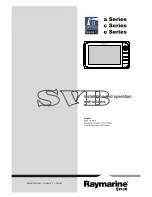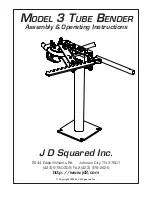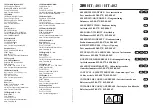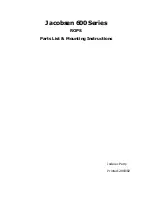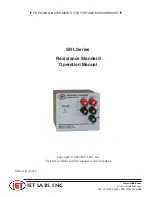
Dual Envelope
The module contains two Voltage-Controlled Envelope
Generators – identical other than the left-hand one having
a slower 'slow' range.
An Envelope begins when the Manual Trigger button is
pressed or when the Gate Input rises above r1V
(via internal comparator). As such, any waveform can be
used as trigger source (not just square wave / gate).
The Envelope Output is unipolar between 0V and +10V
with an exponential shape.
The Mode can be set as:
–
Gated – Attack/Sustain/Release
When a gate occurs, the Envelope Output ramps up
to +10V at a rate determined by Attack and sustains
at that level until the gate ends, at which point it
releases at a rate determined by Decay.
If the Attack phase has not completed by the time
the gate ends, the Release phase starts immediately
without re10V.
If a new gate occurs during Release phase, the
envelope starts rising again without resetting to 0V.
–
Triggered – Attack/Decay
When a gate occurs, the attack phase is triggered
and the output rises to +10V before immediately
entering the decay phase.
It is only the rising edge of the gate that is of importance – if any further gates occur during
the attack phase, they are ignored, while a gate during the decay phase changes the envelope
back into attack phase without resetting to 0V.
–
Loop
The output continuously oscillates between 0V and +10V. Any gate inputs behave like in
Triggered mode – ignored during attack, triggered to attack (without reset) during decay.
The Fast range offers audio rates, primarily for use in Loop mode, while the Slow(er) range offers
sub-audio rates for more typical Envelope usage. Note that faster Attack/Decay rates are achieved
by turning the dials clockwise – this may seem counter-intuitive, but makes more sense if thinking
of it raising the frequency of an oscillator.
Fast –
Atk 34 mS – 60 μS
Dcy 50mS – 90 μS
Slow -
Atk 3.5 S – 5 mS
Dcy 5 S – 8 mS
Slower -
Atk 15 S – 22 mS
Dcy 25 S – 35 mS
Rates can be further expanded downwards by patching a fixed DC voltage (eg. -5V) to any CV input.
Patch Ideas
Oscillator Overtones
–
Set Mode to Loop, Range to Fast and feed a VCO to the Gate Input.
With Attack turned fully clockwise, adjust Decay to hear 'Sync' Waves. Works at LFO rates too.
Sub-Oscillator / Clock-Divide
– Set Mode to AD, Range to Fast and feed a VCO to the Gate.
With Decay turned fully clockwise, adjust Attack to hear audio sub-divisions. Works at LFO rates.
Envelope Shape Bending –
By patching the Envelope output back into the CV inputs, you can bend
the envelope shape into more linear or logarithmic shapes (note - also changes the frequency).
There are no internal adjustment parameters for this module.












